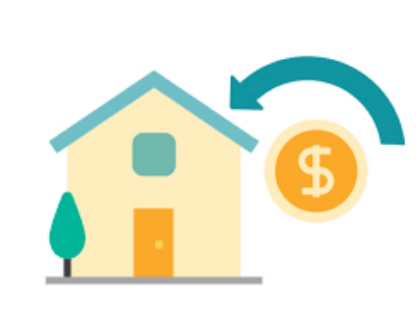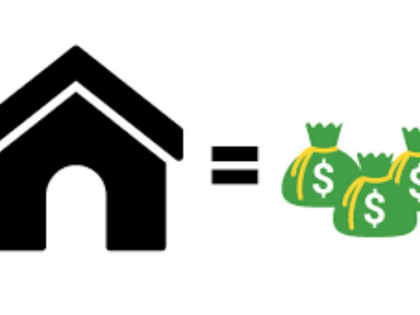Typical fraud and scam types
Cybercriminals employ a range of techniques and deceptions to obtain your personal data. Among the most prevalent forms of scams and fraud are: spoofing phone numbers, emails, and texts in order to get personal information about you, including financial information and account login credentials. We call this a man-in-the-middle situation. Scammers obtain a credit card or loan in your name through loan fraud, and the money typically ends up with them rather than you. Investments may also result in this.
Phishing
 Phishing is the attempt to obtain passwords and other private information from victims by using phony pop-up windows, emails, texts, or websites. Criminals employ a number of strategies to entice victims, including spoofing—presenting a convincingly false website—or instilling a sense of urgency (such as a notice that an account would be canceled). By analyzing their targets, attackers can even use spear phishing, a tactic where they target specific employees.
The names of reputable businesses, governments, or organizations are frequently used by scammers to deceive their victims into clicking on a phishing link or disclosing personal information. Remember that reputable organizations will never ask for passwords, social security numbers, or other private information over the phone, by text, or via email. Additionally, you may verify the legitimacy of a website that seems to be "phishing" by examining the URL or looking for a padlock icon in the browser bar. Without a padlock, the website probably lacks a secure SSL certificate and might be infected with malware.
Phishing is the attempt to obtain passwords and other private information from victims by using phony pop-up windows, emails, texts, or websites. Criminals employ a number of strategies to entice victims, including spoofing—presenting a convincingly false website—or instilling a sense of urgency (such as a notice that an account would be canceled). By analyzing their targets, attackers can even use spear phishing, a tactic where they target specific employees.
The names of reputable businesses, governments, or organizations are frequently used by scammers to deceive their victims into clicking on a phishing link or disclosing personal information. Remember that reputable organizations will never ask for passwords, social security numbers, or other private information over the phone, by text, or via email. Additionally, you may verify the legitimacy of a website that seems to be "phishing" by examining the URL or looking for a padlock icon in the browser bar. Without a padlock, the website probably lacks a secure SSL certificate and might be infected with malware.
Skimming cards
 One common technique used by thieves to obtain credit card information is card skimming. While a user is using the card reader, thieves employ a tiny device known as a skimmer to record the magnetic stripe of a credit card. To obtain PIN numbers, they frequently affix a fake keypad overlay that feels and appears identical to the terminal's actual keyboard. Additionally, they have the option of adding a covert camera to capture clients entering their PINs.
These gadgets are frequently seen in retail establishments, ATMs, and petrol stations. They can even be fastened to card readers used at point-of-sale (POS). Fortunately, by closely checking the card reader for any strange attachments or searching for an inoperative card slot, the majority of these scams can be prevented. Additionally, it's a good idea to tap your card rather than swipe it, as this makes it more difficult for thieves to get your payment details.
A victim should notify their bank and credit card company if they discover that their card information has been compromised. If they report it right away, they should have no trouble getting their money back.
One common technique used by thieves to obtain credit card information is card skimming. While a user is using the card reader, thieves employ a tiny device known as a skimmer to record the magnetic stripe of a credit card. To obtain PIN numbers, they frequently affix a fake keypad overlay that feels and appears identical to the terminal's actual keyboard. Additionally, they have the option of adding a covert camera to capture clients entering their PINs.
These gadgets are frequently seen in retail establishments, ATMs, and petrol stations. They can even be fastened to card readers used at point-of-sale (POS). Fortunately, by closely checking the card reader for any strange attachments or searching for an inoperative card slot, the majority of these scams can be prevented. Additionally, it's a good idea to tap your card rather than swipe it, as this makes it more difficult for thieves to get your payment details.
A victim should notify their bank and credit card company if they discover that their card information has been compromised. If they report it right away, they should have no trouble getting their money back.
Phone scams and fraudulent mobile services
 Scams on phones and mobile devices frequently use coercive methods and make unfounded threats. Scammers might, for instance, assert that your identity has been used to commit federal crimes or that your credit card has been used to purchase illegal narcotics. They might also attempt to coerce people into paying them money by saying they have unpaid taxes or other issues.
In order to maximize the probability that you will respond to their calls, con artists can impersonate government bodies, private businesses, or even local numbers. They may potentially monitor your internet activity by employing "man-in-the-middle" assaults.
Fraudsters may impersonate bank employees, credit card firms, or collection agencies in an attempt to coerce you into disclosing passwords and account login details. After that, they can use that information to steal your identity and empty your accounts. If they want to access financial accounts and other services that need two-factor authentication, they can also try to port, or transfer, your number to a different device and provider. To entice you to click on a link or give them a call, they can even send you texts purporting to be your bank, generally with an urgent message.
Scams on phones and mobile devices frequently use coercive methods and make unfounded threats. Scammers might, for instance, assert that your identity has been used to commit federal crimes or that your credit card has been used to purchase illegal narcotics. They might also attempt to coerce people into paying them money by saying they have unpaid taxes or other issues.
In order to maximize the probability that you will respond to their calls, con artists can impersonate government bodies, private businesses, or even local numbers. They may potentially monitor your internet activity by employing "man-in-the-middle" assaults.
Fraudsters may impersonate bank employees, credit card firms, or collection agencies in an attempt to coerce you into disclosing passwords and account login details. After that, they can use that information to steal your identity and empty your accounts. If they want to access financial accounts and other services that need two-factor authentication, they can also try to port, or transfer, your number to a different device and provider. To entice you to click on a link or give them a call, they can even send you texts purporting to be your bank, generally with an urgent message.
Extortion
 Extortion, or blackmail, is when criminals threaten to reveal private or humiliating information about you to others unless you give them money. This is typically done by email or over the phone. For instance, a cybercriminal may phone you, posing as a government representative and threaten to arrest or deport you for unpaid taxes or a visa issue if you don't transfer them money or bitcoin right away. Sextortion is another popular form of blackmail in which the perpetrator threatens to reveal your personal information, including images and videos, if you do not provide them money.
"Man-in-the-middle" attacks are another kind of blackmail scam in which the perpetrator gains access to your device or network by using a phony attachment, website, text message link, or QR code. They then steal your financial information or passwords. In order to monitor your online activities, they might even lure you into using your webcam or joining a phony WiFi network.
Extortion, or blackmail, is when criminals threaten to reveal private or humiliating information about you to others unless you give them money. This is typically done by email or over the phone. For instance, a cybercriminal may phone you, posing as a government representative and threaten to arrest or deport you for unpaid taxes or a visa issue if you don't transfer them money or bitcoin right away. Sextortion is another popular form of blackmail in which the perpetrator threatens to reveal your personal information, including images and videos, if you do not provide them money.
"Man-in-the-middle" attacks are another kind of blackmail scam in which the perpetrator gains access to your device or network by using a phony attachment, website, text message link, or QR code. They then steal your financial information or passwords. In order to monitor your online activities, they might even lure you into using your webcam or joining a phony WiFi network.











